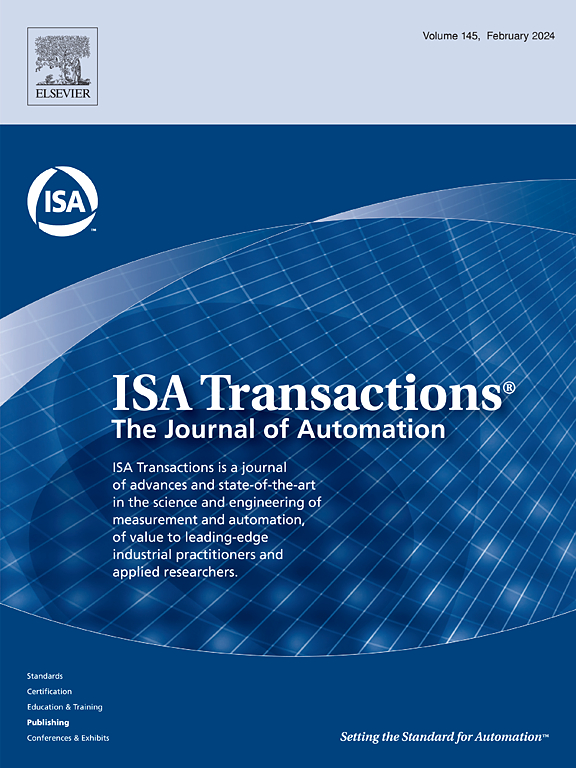基于障碍物Lyapunov函数的飞行器间隙穿越制导律设计。
IF 6.5
2区 计算机科学
Q1 AUTOMATION & CONTROL SYSTEMS
引用次数: 0
摘要
本文提出了一种用于飞行器间隙穿越的新型制导设计。利用间隙的方位信息,基于势垒李雅普诺夫函数进行制导设计。该制导律经过精心设计,可以在依赖主动视觉方法确定间隙边缘的情况下运行,使其在各种实际应用中可靠。使该指导律与现有指导律不同的是,它遵循非线性框架,避免了对系统动力学进行线性化的需要。这一显著特征使得所提出的制导设计即使在航向和航迹角偏离其标称值时也能保持其有效性。采用点质量飞行器和四旋翼飞行器在平面和三维场景下验证了所提制导律的有效性。在考虑阵风和高斯噪声的情况下,进行了大量的数值模拟来验证所提出设计的性能。仿真结果验证了基于障碍物李雅普诺夫函数的飞行器间隙穿越制导方法的有效性。本文章由计算机程序翻译,如有差异,请以英文原文为准。
Barrier Lyapunov function based guidance law design for gap traversal of aerial vehicles
This manuscript proposes a novel guidance design for the gap traversal of aerial vehicles. The guidance design is performed based on the barrier Lyapunov function using bearing information of the gap. The guidance law is meticulously crafted to operate in scenarios where determining gap edges relies on active vision methods, making it reliable in various real-world applications. What sets this guidance law apart from existing ones is its adherence to a nonlinear framework, refraining from the need to linearize the system dynamics. This remarkable feature allows the proposed guidance design to maintain its effectiveness even when the deviations in the heading and flight path angle are significant from their nominal values. The efficacy of the proposed guidance law is substantiated using a point mass vehicle and the quadrotor in the planar and three-dimensional scenarios. Extensive numerical simulations are conducted to validate the performance of the proposed design, considering wind gusts and Gaussian noise. The results obtained from these simulations demonstrate the efficacy of barrier Lyapunov function-based guidance for aerial vehicles in the context of gap traversal.
求助全文
通过发布文献求助,成功后即可免费获取论文全文。
去求助
来源期刊

ISA transactions
工程技术-工程:综合
CiteScore
11.70
自引率
12.30%
发文量
824
审稿时长
4.4 months
期刊介绍:
ISA Transactions serves as a platform for showcasing advancements in measurement and automation, catering to both industrial practitioners and applied researchers. It covers a wide array of topics within measurement, including sensors, signal processing, data analysis, and fault detection, supported by techniques such as artificial intelligence and communication systems. Automation topics encompass control strategies, modelling, system reliability, and maintenance, alongside optimization and human-machine interaction. The journal targets research and development professionals in control systems, process instrumentation, and automation from academia and industry.
 求助内容:
求助内容: 应助结果提醒方式:
应助结果提醒方式:


